

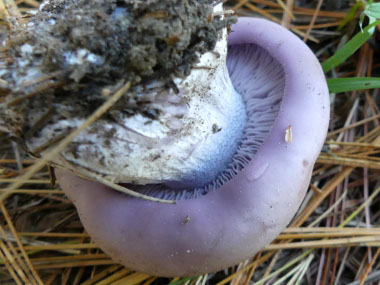
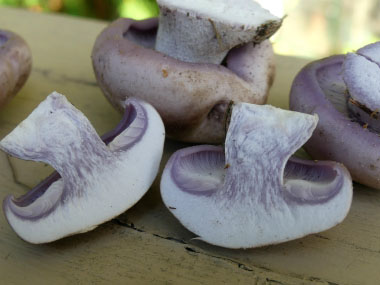
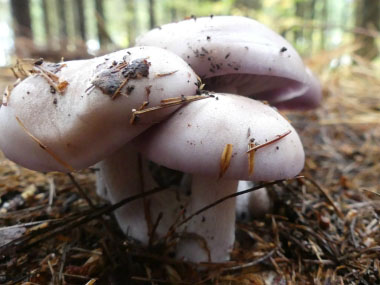
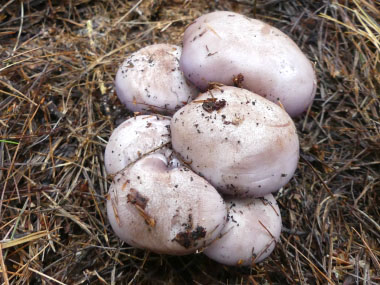
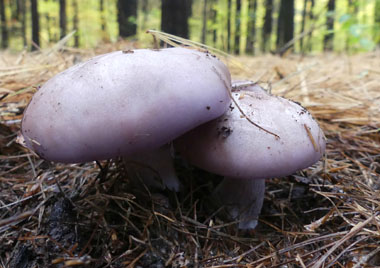
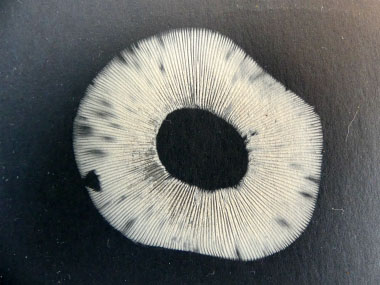
Do not eat any fungi that has not been properly identified by a qualified professional, some are DEADLY when ingested. All edible wild fungi MUST be cooked.
The blewit was originally described in 1790 and named Agaricus nudus by the French mycolgist Jean Baptiste Francois Pierre Bulliard. In 1871 the wood blewit was transferred by German mycologist Paul Kummer into the genus Tricholoma. Mordecai Cubitt Cooke moved this species it to the genus Lepista also in 1871, and so Tricholoma nuda and Lepista nuda are synonyms. The name Clitocybe nuda, was proposed by Howard E. Bigelow and Alexander H. Smith in 1969 but Lepista is still used.
Type
Distinguishing Features
The cap measures anywhere from 4 to 20 cm. The convex cap has an inrolled margin when young, becoming broadly convex to nearly flat, or with an uplifted, wavy margin in age. The cap is smooth yet slightly tacky when moist. It boasts an attractive violet or purplish colour. As it ages the surface turns buff. These mushrooms have thick; soft; purplish to lilac-buff or whitish flesh.
Height
These mushrooms can grow 5 to 10 cm tall, the non-tapering stipe is solid and often has a swollen (clavate) base.
Habitat
These mushrooms grow in leaf and pine needle litter in deciduous and mixed forests.
Spore Print
Faded pink to pinkish.
Season
Autumn and depending on location, these mushrooms can grow into December during mild weather.
Gills
Gills are sinuate and crowded. They have a beautiful lilac flush when young, turning buff and then brown as the fruiting body matures.
Edibility
Wood blewits are edible if well cooked, but it is a wise precaution to try a very small portion at first because they have been known to disagree with some people. In many parts of Europe wood blewits are available in supermarkets throughout most of the autumn and winter months. Young caps are best. Taste is not distinctive, it is pleasant, can be slightly bitter; it has a pleasant fragrant.
Other Name
Clitocybe nuda.
Recipes
To support our efforts please browse our store (books with medicinal info, etc.).
Winter Survival Food Handbook

PDF Plant Magazines
Types of Wild Food
Geographic Zones Seasons
Disclaimer
EdibleWildFood.com is informational in nature. While we strive to be 100% accurate, it is solely up to the reader to ensure proper plant identification. Some wild plants are poisonous or can have serious adverse health effects.
We are not health professionals, medical doctors, nor are we nutritionists. It is up to the reader to verify nutritional information and health benefits with qualified professionals for all edible plants listed in this web site. Please click here for more information.
Why Edible Wild Food?
- Food costs are rising
- Free, wild food is readily abundant
- Wild food adds nutrition to your diet
- Wild food can help treat various medical conditions





